<Bryan rant on> Let me start by giving an unconventional answer. As I travel, I hear many people talk about how places are very different. Germans are efficient and socialist or Americans are materialistic and capitalist. They give supporting anecdotes and stories.
This kind of answer doesn’t represent how I experience the world. I’ve been very lucky to travel all over. The world is quite connected and shares similar lifestyles in many ways. See how families with an income over $2000 a month live around the world on Dollar Street, for example. Many facets of life are immediately familiar anywhere.
I want to practice giving our shared humanity the weight it deserves, while acknowledging our differences. I think this is more representative.
So with that in mind, I’ll dive into more about life in Berlin so far and how it’s like. <Bryan rant off>
<Joanna comment on> Bryan wrote this post. I don’t entirely share his impressions, and I attend more to the differences than Bryan does. But that’s just our respective natures! <Joanna comment off>
Language
Before I arrived in Berlin, Joanna and other friends said it would be possible to get by with English. This is technically true — several friends who’ve been here for 6+ years don’t speak much German and it works for them. There are many English-speaking native Germans and expats, especially in downtown (Mitte).
Within an hour of landing here though, I felt that German is the primary language for business, bureaucracy, and life. It takes work to use anything else. Many cultural events and exhibits are only in German. Plus, although many Germans learned English in school growing up, very few older Germans seem at ease discussing complex topics in English, unless they lived or worked in an English place. So not knowing German feels limiting.
This motivated me to learn more German! I used SmarterGerman, which teaches a broad set of skills using modern methods (minimal memorizing!). It’s been quite helpful, along with having a fluent life partner 🙂 Now I can often participate in basic conversations. I made it back in one piece on a couple of solo weekend trips, without Joanna.
It’s been an interesting experience and helpful to imagine what living in San Francisco without English might be like. Probably similar and even harder to get by, except for some government services available in multiple languages. Also it’s been fun to see how close or far away our smartphone apps are from a Babelfish. We’ve come a long way since I travelled the Southern Hemisphere in 2012, but there’s a long way to go.
Bureaucracy

Joanna and I have worked our way through a good deal of bureaucracy in Berlin. It’s been tolerable. A few bureaucrats have been fussy, but usually we’ve had friendly people, intent on applying rules in a sensible way, with reasonable wiggle room. We’ve heard it’s harder for people who don’t come from USA / Canada, with our professional background.
Bureaucracy was generally in German only. Thankfully, I had Joanna to help, and all I had to give was snuggles and back rubs. The most important step was the Anmeldung (residence registration) once we had a rental apartment. So many other steps depend on this.
Basically it felt like the bureaucratic experience when I moved to the US for college, except everything in the US depends on getting a Social Security Number. It was also interesting to consider how each system marginalized some people.
Groceries
Buying groceries in Berlin is a lot like SF, down to the impulse candy buys before checkout.
The first time I went shopping alone, without Joanna, it took me an hour and a half to buy ten things. I had to learn enough German to figure the different grades of wheat flour and which one to use. A week later, once I’d learned how to map English brands and item names to German ones, I felt at home. The grocery has most of the same kinds of things, organized in the same sections, and sold in the same ways.
There are some differences too. Stores in SF stock a much bigger Kombucha shelf. Berlin groceries have more tasty cheese and sausage. The fruit and vegetable selection in Berlin is a bit more seasonal and local, but there’s often fruit flown in from South America. And it’s much harder to find bean-to-bar chocolate in Berlin.
Also, there are no big-box organic groceries in Berlin. At our neighbourhood favourite, the LPG Biomarkt, you get to chose between three or four kinds of eggs, depending on what’s available. When we were back in SF in September, the Whole Foods was shockingly large. Disorienting almost! The egg section there takes up as much space as the entire dairy section at LPG:
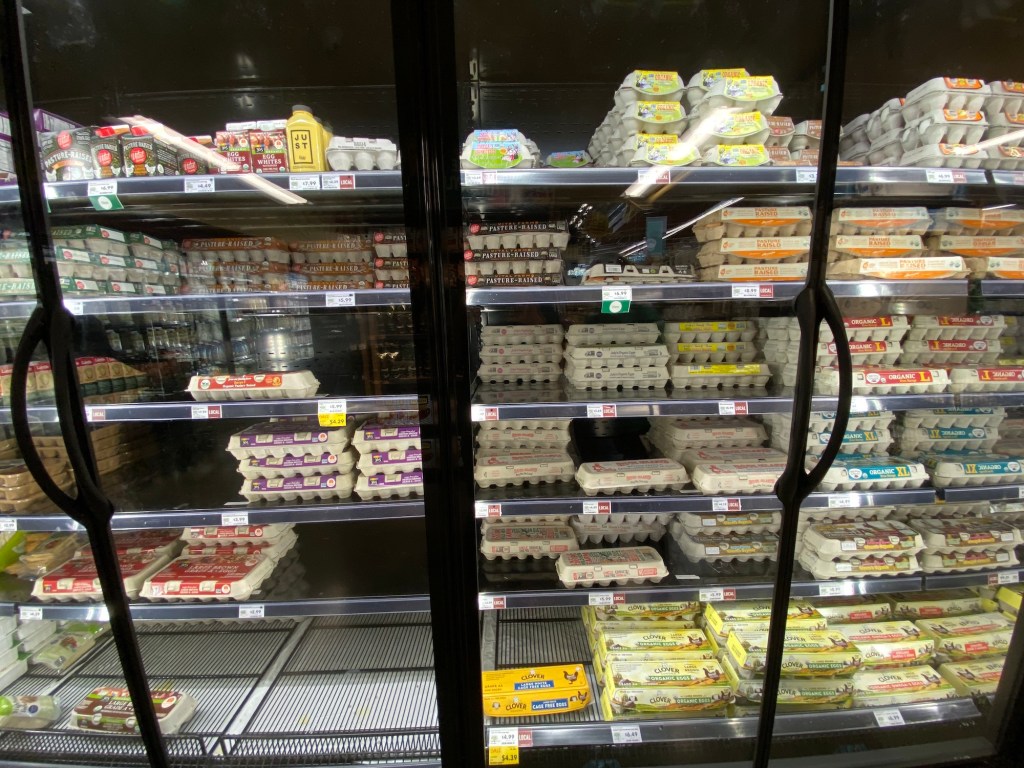

Getting Around
While San Francisco is one of the better places for walking, biking, and transit in the US, getting around in Berlin feels noticeably faster, safer, and less car-centric.
First, Berlin has a historical advantage: density. Since the late 1800s, over a million people have lived in the central core. All the buildings in the core are six stories or more, with lots of shops and offices mixed in with homes. Only a few neighborhoods in SF like Russian Hill and the Mission approach this level of density. Very few have as much mixed use. This means that in Berlin, there are more people, services, and cultural opportunities in a smaller area. Things are just closer, no matter how you get there.

For virtually all trips in the city of Berlin under half an hour, Joanna and I bike. While San Francisco has an admirable network of bike corridors like the fun Wiggle, Berlin’s is denser, with physically separate bike lanes, bike-only traffic signals. Add in the lack of hills in Berlin, and biking feels a lot easier than in San Francisco.
When we’re not on bike, the public transit is also a step up. San Francisco has reasonable transit — I used Caltrain daily for commuting and BART often to go to East Bay, but compared to Berlin, it’s slow, infrequent, and has spotty coverage. In the central core in Berlin (inside the Ringbahn), you can go from anywhere to anywhere in half an hour or less. Usually only a few minutes slower than by car or bike. Plus subways come every 3 minutes, not 15 like the BART or an hour between Caltrains. It takes much less thinking.
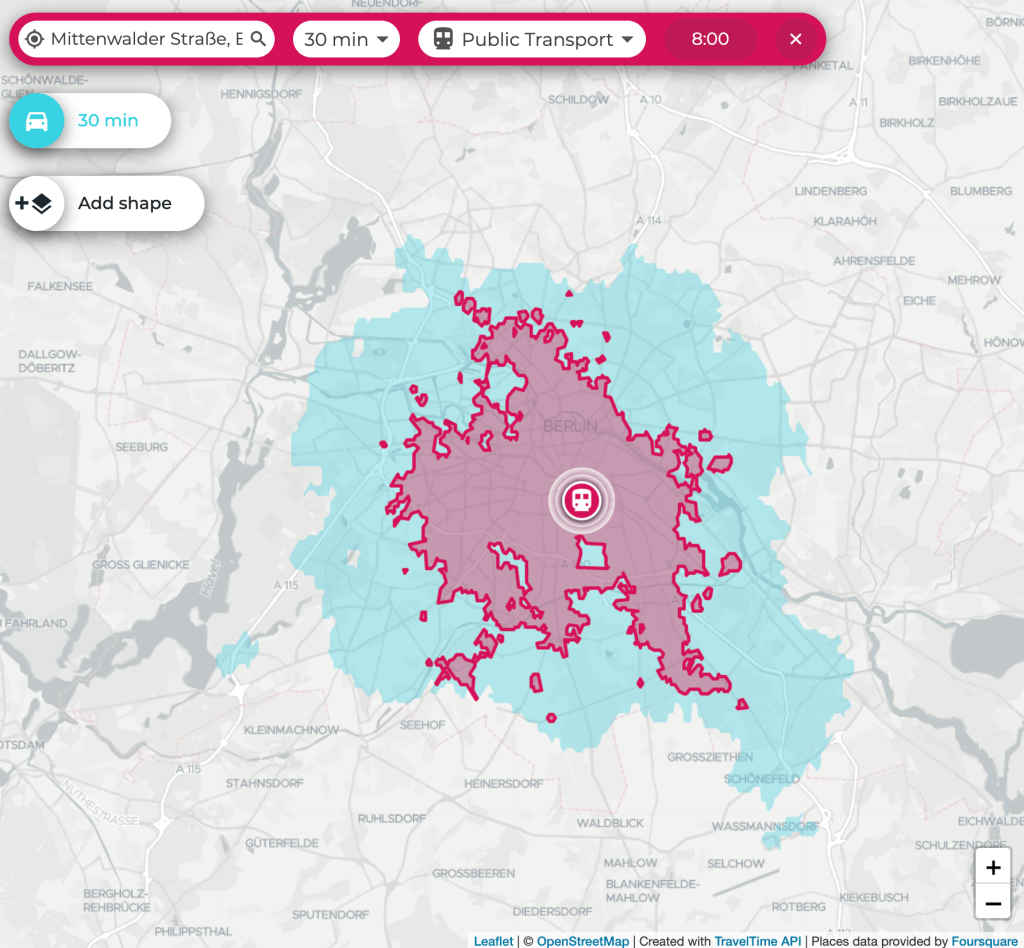
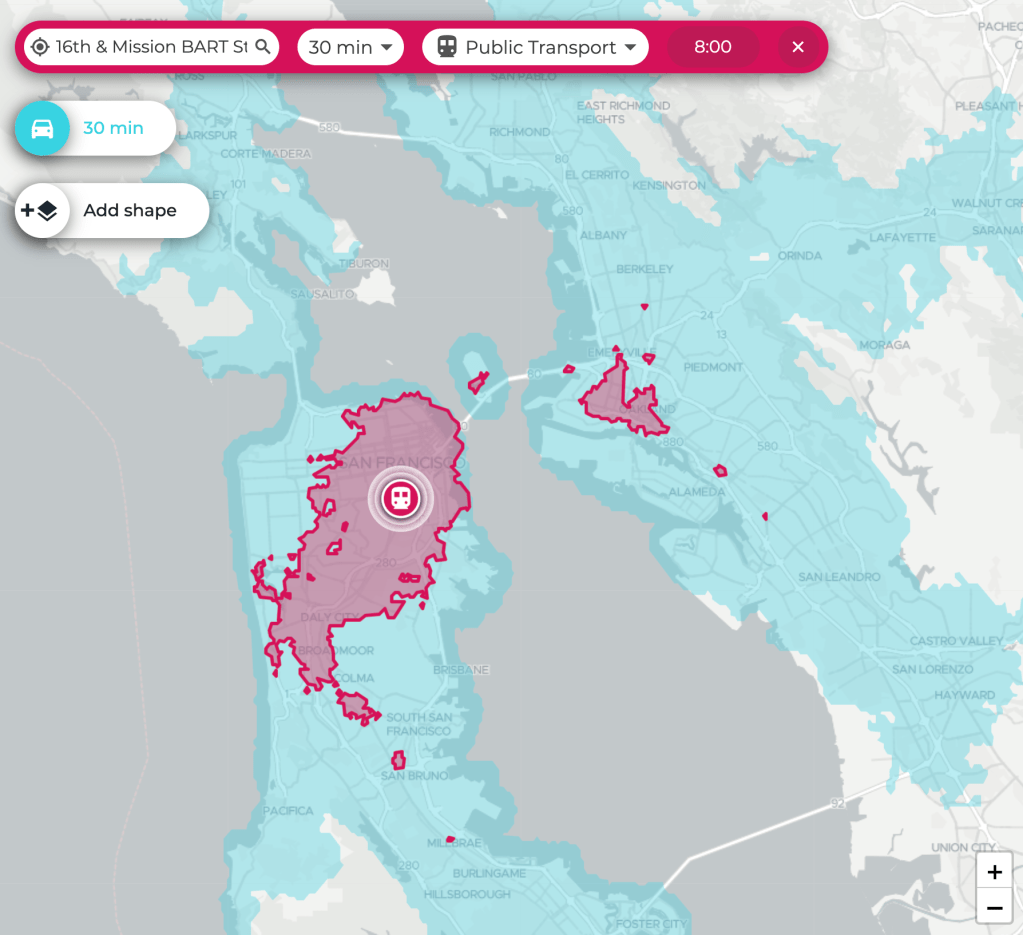
(pretty close to a best case scenario)
For longer trips, there is a dense train network. Travel time often approaches or beats flying or driving, with much better comfort. In California, I rode the Coast Starlight from Disneyland to San Jose once and it took 12 hours to go 360 miles. This is not practical. In Germany, the fast train from Berlin to Munich goes a similar distance in under 4 hours. This was a wonderful way to see the Alps or meet up with friends in the south.
One thing both places share is a focus on cars. Cars, parking, roadways, traffic, pollution, and noise are pervasive around Berlin almost as much as in San Francisco. Even though public transit and biking work well for me personally, in a 2015 study, a plurality of Berliners (37%) got around daily by car. An even larger fraction (45%) preferred to use the car as the primary mode of transportation. It’s been nice to hear about a car-free Market St in SF from afar. Car-free zones in Berlin are coming but stalled in trial projects.
Transportation works in both places, but it just works better in Germany. The historical advantages in land use and infrastructure that make this possible will take many decades for California to catch up on.
WILDERNESS
While we’ve been here in Germany, it’s been wonderful to wander the lakes and forests around Berlin, hang out in beautiful urban parks in the city, explore the canals and rivers, and visit a few spectacular national parks. There’s plenty of thoughtfully preserved nature here. Fall colours are beautiful all over, compared to a few choice spots in California. Walking on the beach in Jasmund National Park on the Baltic Sea reminded me very much of hiking the Lost Coast in California — waves rolling onto a cliff-side beach for miles and miles.
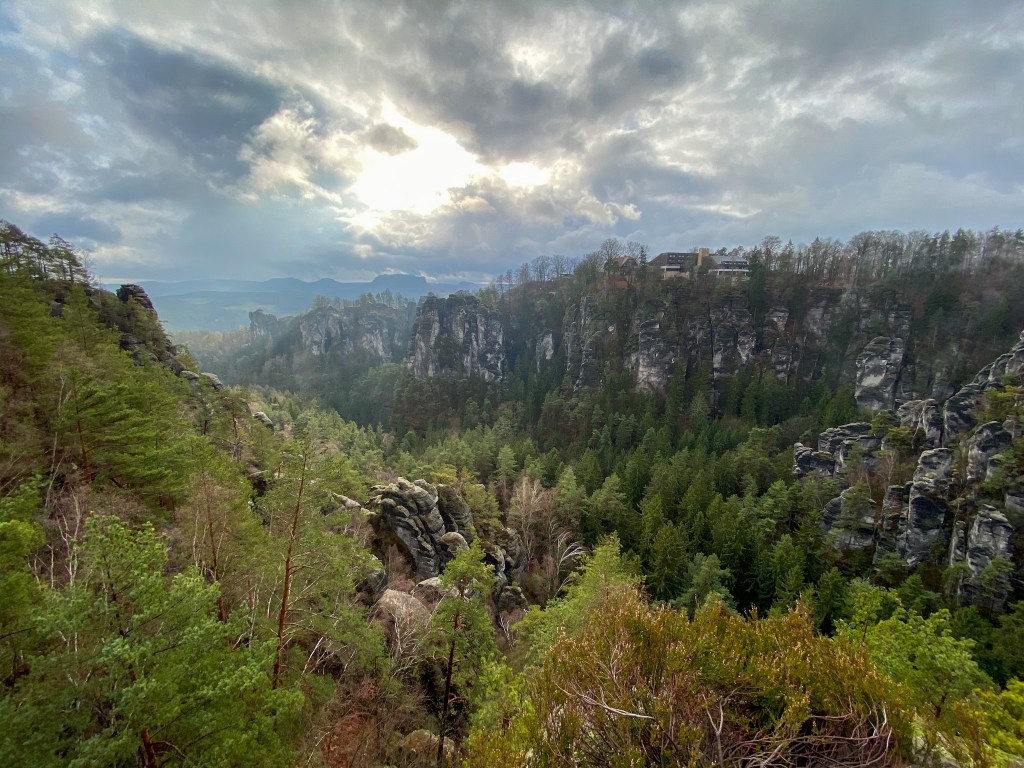

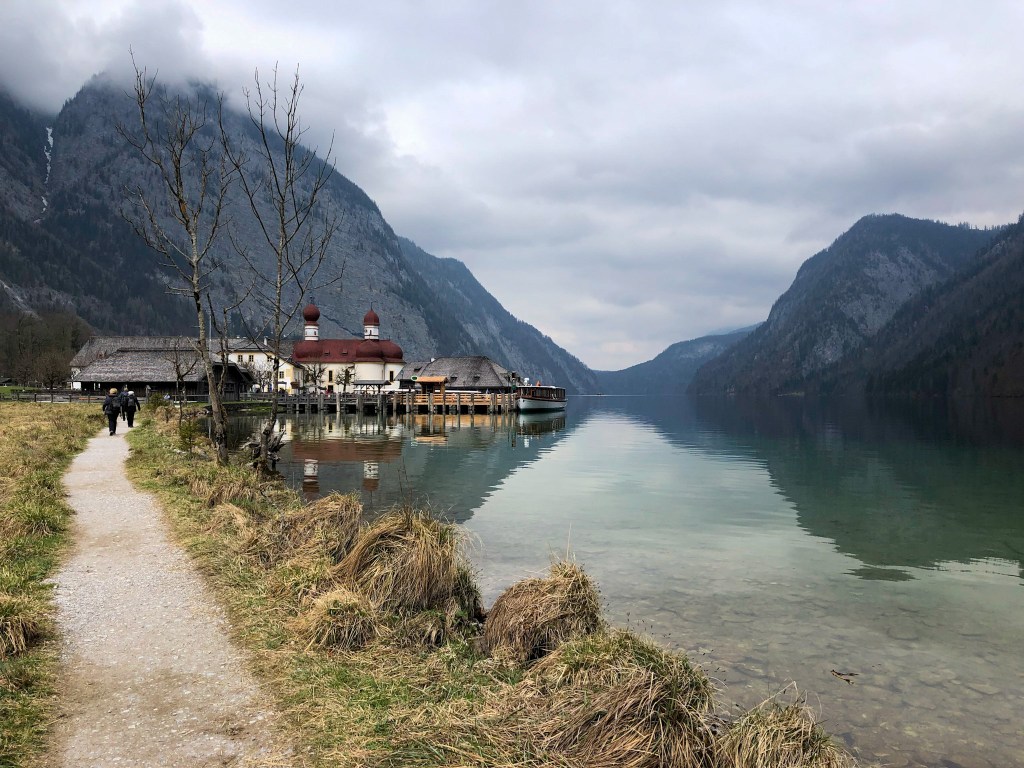
However, I miss the wilderness in California. There is nothing like it here. Even in the national parks, it’s hard to avoid running into centuries of intensive land use: farms, towns, roads, trains, boats, and airplanes. This has benefits, like stopping at a cafe for tasty Apple cake mid-hike. But, it’s hard to have the same level disconnection from human influence.
Germany is working to improve, but only 0.6% of the country is protected wilderness. This is a far cry from 15% of California designated as wilderness, and over 47% as protected public land of some kind. Just as Germany has a historical legacy of better transportation infrastructure, California has a noticeably stronger legacy of wilderness protection.
In Short…
In my day to day life here, I feel like many things are quite similar in general. It took a few weeks to pick up enough German, setup a foundation, and shift habits slightly. The only thing that’s been harder to adjust to is that most of my friends and community are back in the States.
More Berlin impressions to come in a future post on things like entertainment, gender roles, nudity, children, housing, homelessness, pace of life, smoking, tech, dim sum, and more. Maybe also what the alternate-universe German Joanna is like compared to California Joanna?
Leave a comment